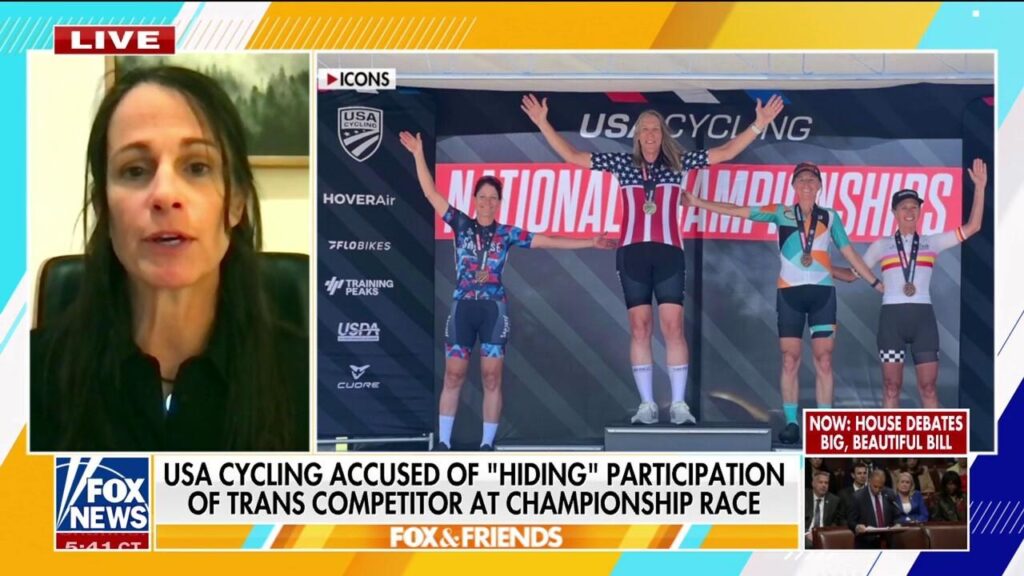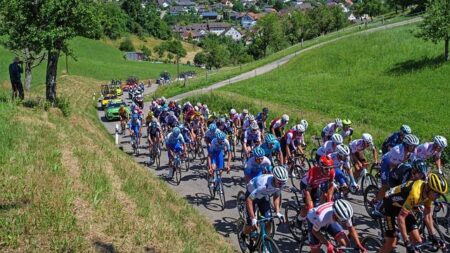In a highly contentious outcome that has reignited discussions around gender identity in sports, a transgender athlete has claimed victory at a recent USA Cycling women’s event, drawing both acclaim and criticism. While the athlete celebrated the achievement, several female competitors voiced their objections, raising concerns about fairness and inclusivity in women’s sports. This incident underscores a growing divide within the athletic community as debates over policy, equity, and the rights of transgender individuals continue to dominate headlines. As stakeholders on all sides grapple with the implications of this landmark event, voices across the spectrum are calling for reconsideration of existing guidelines governing participation in women’s competitions.
Transgender Participation in Women’s Sports Sparks Controversy Among Competitors
In a recent event that has intensified the ongoing debate surrounding transgender athletes in sports, a trans female competitor triumphed in a prestigious USA Cycling women’s race. This unexpected victory has ignited a wave of protests among female cyclists, who argue that the inclusion of trans women in female categories undermines the integrity and fairness of women’s sports. Competitors have voiced concerns about the physical advantages that trans women may possess, stemming from their biological backgrounds, leading to calls for a reevaluation of current policies governing participation in women’s events.
Critics have highlighted several key points in their arguments against the status quo:
- Equality and Fairness: Athletes argue that allowing trans women to compete against cisgender women creates an uneven playing field, impacting the opportunities available to female athletes.
- Physical Advantages: Many competitors believe that the physiological advantages resulting from male puberty give trans female athletes an edge in strength and endurance.
- Safety Concerns: In combat sports and contact sports, the potential dangers associated with mismatched physical capabilities raise alarms about the safety of all competitors.
In response to the criticism, various sports governing bodies are reassessing their policies and rules. As the debate continues, the situation remains contentious, with many advocating for a balanced approach that considers both the rights of transgender athletes and the need to preserve fair competition for cisgender women. The need for a thorough examination of these complex issues has never been more urgent, as individual voices are heard and the future of women’s sports hangs in the balance.
Challenges Faced by Female Athletes in the Evolving Landscape of Gender Identity
As the debate surrounding gender identity continues to reshape the landscape of sports, female athletes find themselves navigating a complex web of challenges that can overshadow their hard-earned achievements. Recently, a trans athlete’s victory in a USA Cycling women’s event has ignited protests and vocal pushback from competing female cyclists. Many female athletes express concerns over fair competition, safety, and the integrity of women’s sport, as the inclusion of transgender women in female categories raises questions about biological differences that may confer advantages. These vocal protests reflect a growing anxiety among female athletes who feel their voices are often marginalized in an arena where discussions about inclusion dominate.
The impact of this evolving dialogue extends beyond competitive performance to the very essence of female identity in sports. Female athletes, already facing numerous barriers such as funding disparities, media representation, and paternalistic governance, are now challenged to affirm their rights and space in an environment that some perceive as increasingly exclusive. As athletic organizations grapple with policies that attempt to balance inclusivity with fairness, the emotional toll on female competitors is profound. They confront a dilemma: how to advocate for their rights without devaluing the identities of their trans counterparts. This precarious position creates an atmosphere where solidarity among female athletes is tested, as they seek to advocate for both fairness in competition and respect for all identities.
Strategies for Balancing Inclusion and Fairness in Competitive Sports
Balancing inclusion and fairness in competitive sports is a complex challenge that calls for careful consideration and innovative solutions. As discussions around athletes’ rights continue to evolve, stakeholders must focus on blending opportunities for participation with maintaining the integrity of competitions. Strategies might include:
- Developing clear eligibility guidelines: Establishing transparent criteria for participation can help clarify the rules under which athletes can compete, ensuring that all competitors understand the standards in place.
- Implementing tiered competitions: Introducing categories or divisions based on various attributes could help accommodate a wider range of athletes while preserving fairness in outcomes.
- Encouraging open dialogue: Fostering environments where athletes can express their views and concerns about inclusion policies can lead to more balanced and equitable solutions.
Moreover, sports organizations might consider collaborating with experts in sports science and gender studies to develop evidence-based approaches that address the nuances of physical performance and gender identity. Regular reviews of policies are crucial to ensure they adapt to evolving societal norms and scientific understanding. A potential framework could include:
| Strategy | Potential Outcome |
|---|---|
| Continuous research | Informed policy revisions |
| Community engagement | Increased trust and support |
| International cooperation | Standardized practices |
In Conclusion
In the wake of a controversial victory at the USA Cycling women’s event, the achievement of trans athlete [Athlete’s Name] has sparked significant debate within the sports community. As female competitors voice their concerns and protest against the inclusion of transgender athletes in women’s categories, the conversation surrounding fairness, inclusion, and the evolving landscape of athletics continues to gain momentum. This incident highlights the complex intersection of gender identity and competitive sports, raising important questions about policy and equality. As stakeholders from various sides weigh in, the dialogue is sure to influence future regulations and the dynamics of women’s sports, making it a pivotal moment in the ongoing discussion about inclusivity in athletics.











